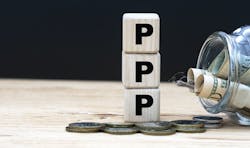What’s Different About the Latest Round of PPP Loans
The most recent round of Paycheck Protection Program funding, which opened yesterday, comes with a few important differences. In order to combat potential fraud and confusion, PPP applications will first be subjected to a series of checks before applicants receive a loan number, reports Construction Dive. This new addition to the application process will extend processing time by one day. There is also a new focus on community financial institutions, along with minority, underserved, veteran, and women-owned businesses. Small, community lenders will be connected to borrowers through the Small Business Association’s Lender Match tool and borrowers will be encouraged to fill out an optional demographic questionnaire to bolster efforts to reach underserved communities.
Key updates to the program include:
- PPP borrowers can set their PPP loan’s covered period to be any length between 8 and 24 weeks to best meet their business needs.
- PPP loans will cover additional expenses, including operations expenditures, property damage costs, supplier costs and worker protection expenditures.
- The program’s eligibility is expanded to include 501(c)(6)s, housing cooperatives and direct marketing organizations, among other types of organizations.
- The PPP provides greater flexibility for seasonal employees.
- Certain existing PPP borrowers can request to modify their First Draw PPP Loan amount.
- Certain existing PPP borrowers are now eligible to apply for a Second Draw PPP Loan.
